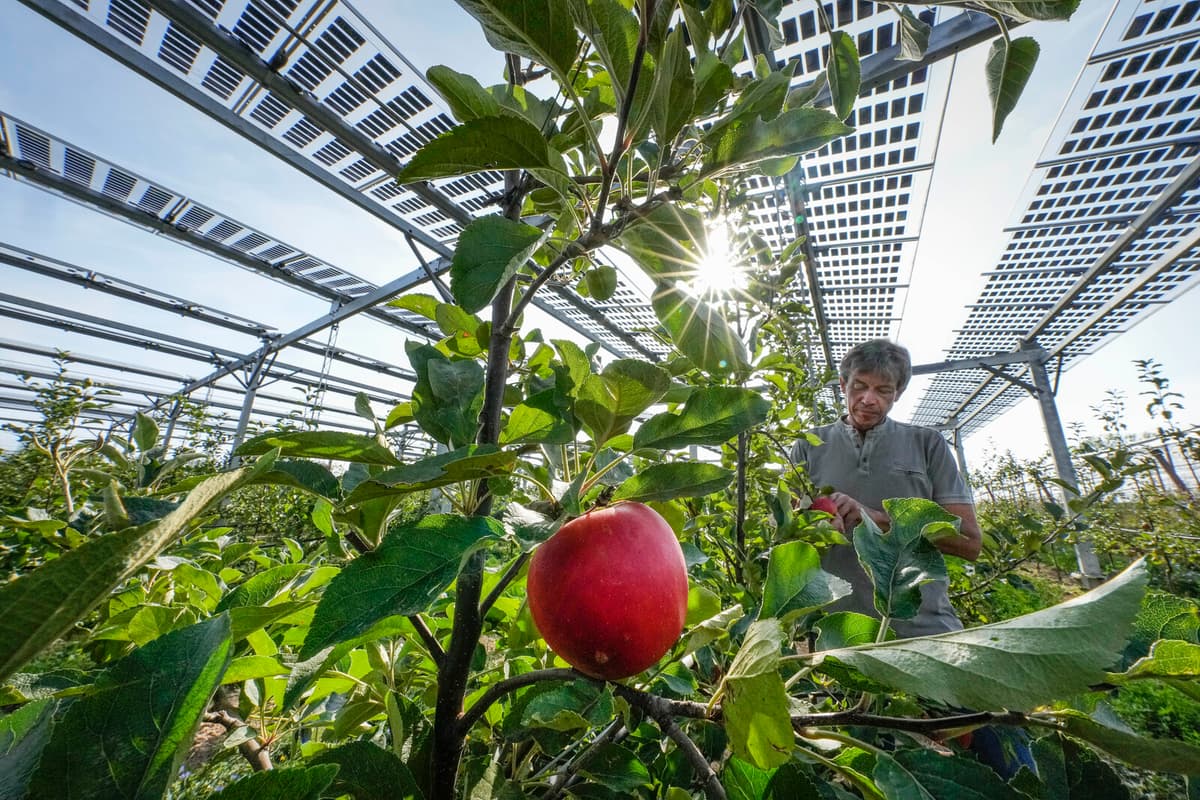Nearly 600 gigawatts of solar cell capacity was installed in the world last year, according to Solar Power Europe.
Approximately four percent of Sweden's electricity comes from solar cells I think that within a few years we will have more than ten percent, says Marika Edoff at Uppsala University.
The emergence means that they are starting to appear in odd places as well. Here are some examples:
1. On lakes
Floatable solar cell facilities are emerging here and there, including at power plant dams.
You have very good power connections there. It's very easy to connect such a power plant, says Edoff and tells that some dams also have problems with evaporation.
Then it can be good to cover the surface with something and there solar cells can be an alternative.
2. Power plant roads
Near power lines that, for example, pass through the forest, there are areas that regularly need to be cleared. There it may be possible to set up solar cells. In Sweden, however, the basic rule is that the minimum horizontal distance from the power line should be 50 meters to the facility.
3. Railways and roads
In Switzerland, a hundred meters of solar panels have been placed on the railway track at the village of Buttes. The company Sunways claims that they can be quickly placed with a machine. Experiments are also being conducted with building solar panels into ordinary roads, although Marika Edoff does not think it is so suitable in Sweden.
They become so dirty and in the winter it becomes very cumbersome with snow clearing
4. Over parking lots
Placing solar panels on top of parking lots can help keep the cars cool.
Then you can use the electricity for charging stations for electric cars, says Edoff.
5. On fields and arable land
Standing solar panels can now be charged from both the front and back. Then the panels do not take up as much space and can be placed in rows on, for example, fields.
In other places, a little shade can be beneficial for the crops, and some panels only cover parts of the cultivation, which can provide an extra income.
If you can combine and have both solar cells and at the same time be able to grow food, it's very interesting. There, development is going very fast, says Edoff.
6. Facades and windows
Some facades have started to be covered with solar panels. At Luleå University of Technology, research is being conducted, among other things, on thin films of antimony sulfide, which can be made semi-transparent and in the future be placed on windows.
"With this technique, every window can become a small electricity producer", says researcher Pankaj Kumar in a press release.
7. On vehicles
Boats, cars, and trains. In several places around the world, there are competitions in various vehicles that only run on solar energy. So far, it's not for the mass market, but many boats have, for example, small solar panels to charge batteries.
8. In space
In 1954, silicon solar panels were developed by Bell. Just four years later, the first spacecraft with solar panels in place in space, NASA's Vanguard 1, existed.
The solar cell industry started in space, after all, it's such a good power source. It's not a fuel that runs out when you use solar cells to produce electricity, says Anna Werner, CEO of Swedish Solar Energy.
Today, solar panels are used on spacecraft both in space and on Mars, and they keep, among other things, the astronauts on board the space station ISS alive.





